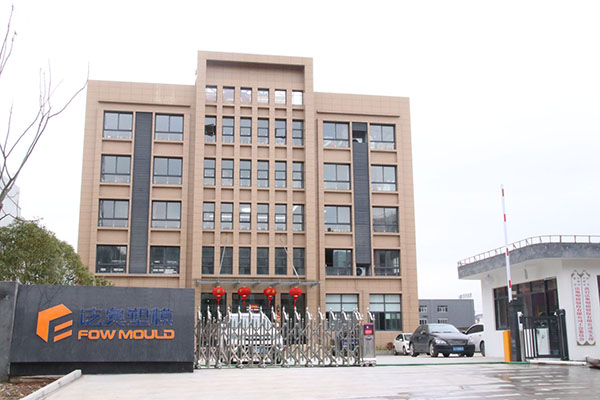Unearthing the Secrets of Leaf Rake Mould
- Home
- > Blog
- > Leaf Rake Mould
Share :
Share :
Introduction
Leaf rake mould is a tool specifically used for making leaf rakes, mainly using injection molding process to pour or press melted plastic or other materials into the shape of the mould, and then various shapes of leaf rakes can be produced. Leaf rake moulds usually consist of two main parts: the cavity (hollow part of the mould) and the core (filling the cavity). When these two parts are combined together, they form the space of the leaf rake head and its teeth. These leaf rakes can be used for various occasions, such as cleaning fallen leaves or sweeping grass clippings of gardens.
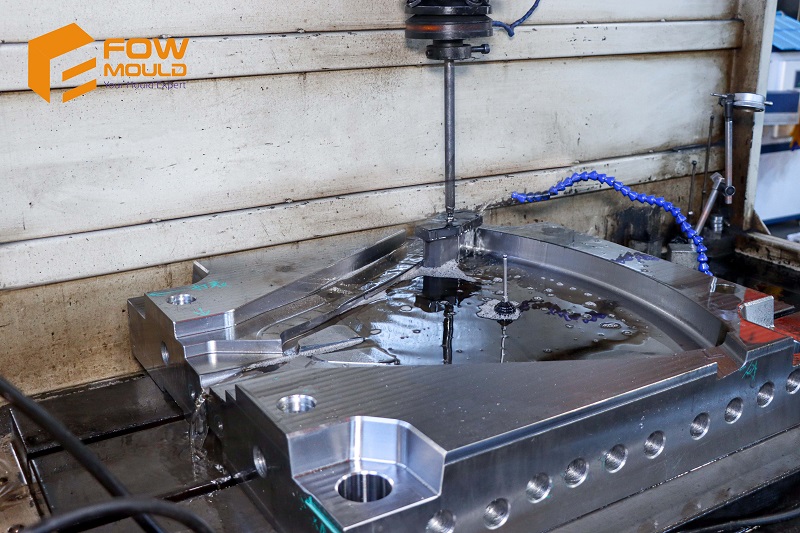
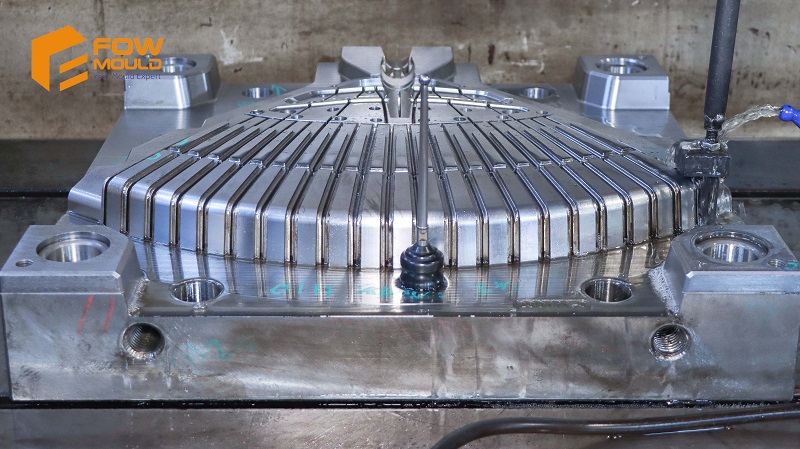
The Process of making leaf mold
Making leaf mould requires multiple steps, which may vary based on the material (plastic or metal) of the rake and the manufacturing scale. These steps must be strictly followed to ensure the quality and accuracy of the final product.
Design
The first step involves the design of the leaf rake itself. The stage will take into account factors such as the shape, size and required mechanical properties of the product. Once the design is complete, it is converted into a 3D model using CAD (Computer Aided Design) software, which serves as the blueprint for the mold. A negative image of the leaf rake is created in the CAD software. The mold is usually two halves that can be sandwiched together, with the space in between used to shape the rake.
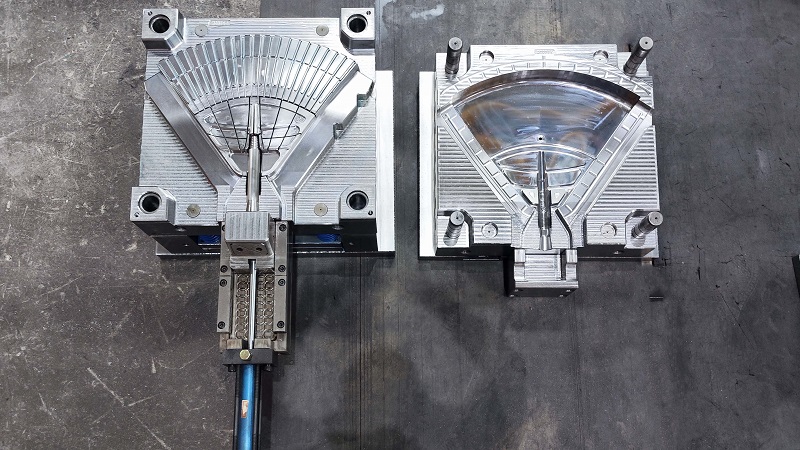
Machining the Mould
Once the design is completed, the CAD model can be converted into CNC programming code (such as G-code), and then these codes are input into the CNC machine tool. The CNC machine tool will accurately process the shape and size of the core and cavity according to these instructions, and manufacture rough rake mold components. For particularly complex or high-hardness parts, such as the fine parts of the mold, they can be completed through electrical discharge machining (EDM). By using high-frequency electrical sparks to erode metal, complex rake shapes can be processed.
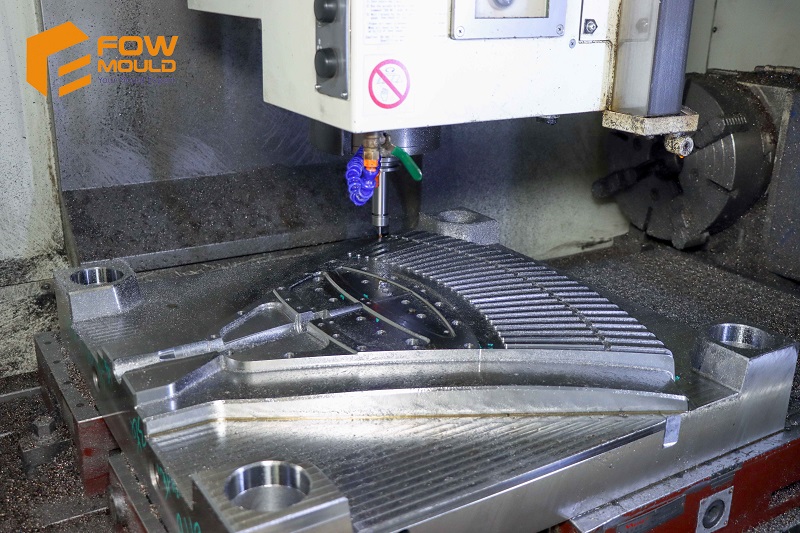
Testing and Adjustment
CMM is used for measurement and inspection during and after the completion of the mold manufacturing process. By touching the surface of the part with a probe, the coordinates of each point on the surface can be obtained. By comparing and calculating the obtained data with the CAD model data, the actual dimensions of the part can be determined. After all the parts are machined, the mold needs to be assembled for experimental use, and if the mold runs properly, it can go into official production. Otherwise, it is necessary to go back to the previous steps for corrections and adjustments.
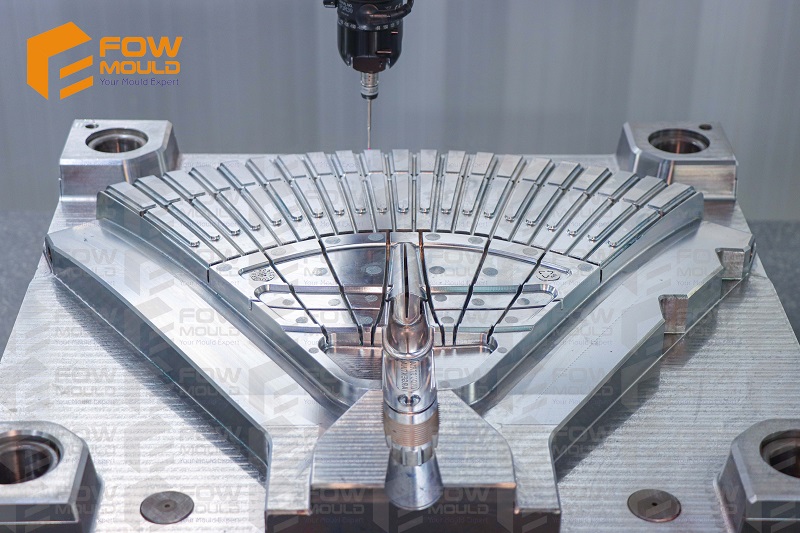
Mass Production
After testing and making appropriate adjustments, the mold can be put into mass production. Install the mold on the injection molding machine, set the appropriate process parameters, heat the material (plastic or metal), inject it into the mold, let it cool and harden, and then take out the finished product.
Versatile Uses of a Leaf Rake
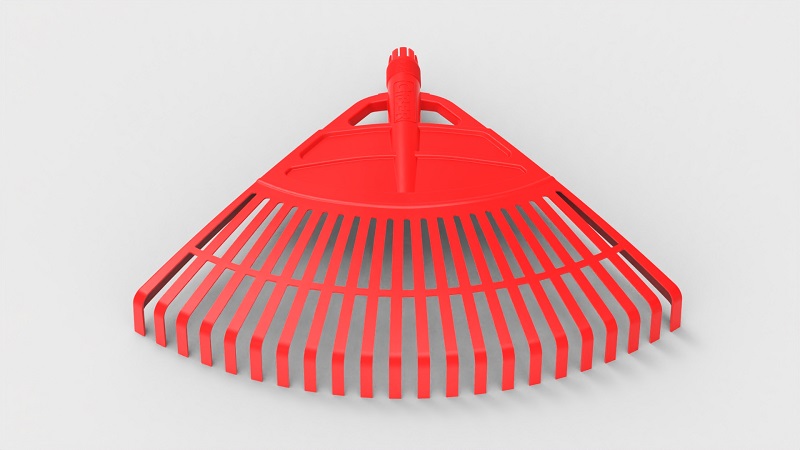
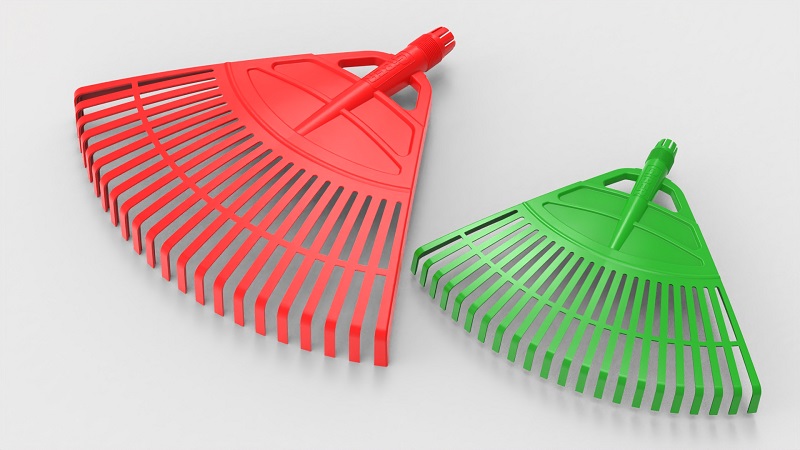
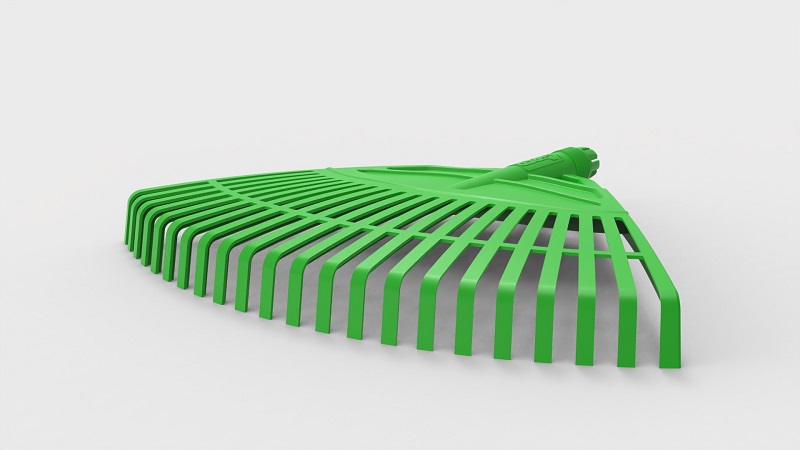
A leaf rake is a common gardening tool used primarily for leaf removal and soil preparation. The following are some specific applications for leaf rakes:
Collecting leaves
This is the most common use of a leaf rake. Using a leaf rake makes it easy to remove leaf debris from your lawn or garden ground, making it possible to keep the environment neat and tidy.
Debris Clearance
In addition to cleaning leaves, leaf rakes can also be used to clean up other relatively fine debris, such as dead branches, pine needles, shredded paper, etc.
Seed Sowing and Soil Preparation
A leaf rake can also come in handy during the sowing process. It’s perfect for spreading grass seeds or other types of seeds evenly across the soil. Additionally, it can be used to gently turn and loosen the soil. This helps to improve soil structure and promotes aeration and drainage, setting the stage for healthy plant growth.
Types of leaf rake
The manufacturing materials of a rake can vary depending on its usage and design requirements. When selecting materials for a rake, factors such as usage scenarios, durability, weight, and cost need to be considered. Different materials create different types of rakes. Here are some common types of rakes:
Metal Leaf Rake
Steel leaf rake is a common metal leaf rake, usually made of durable steel. It has strength and durability, suitable for handling heavier tree leaves and debris, and is often used in long-term and heavy-duty work environments.
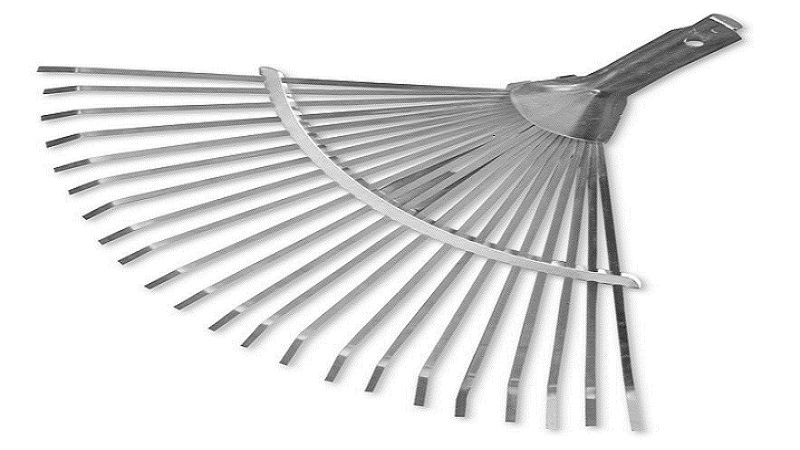
Plastic Leaf Rake
Plastic leaf rakes are usually made of durable polymer materials, such as polypropylene (PP) or polyethylene (PE). Plastic leaf rakes are lightweight, easy to operate and carry. They have good corrosion resistance and rust resistance, and do not rust in wet environments.
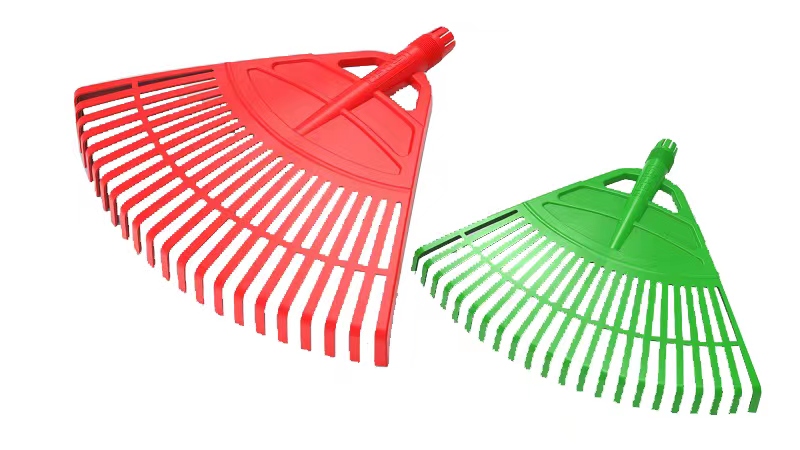
Wooden leaf rake
Wooden leaf rakes are usually made of sturdy wood such as teak or oak, with a natural and beautiful appearance, and are relatively lightweight.Suitable for light gardening work and decorative occasions, can be used for clearing leaf pile and fallen leaves.
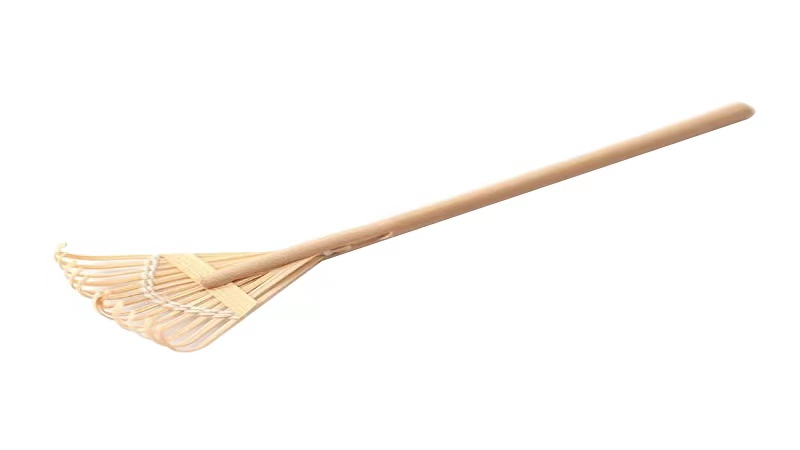
Advantages of Plastic Leaf Rakes
Plastic leaf rakes are a convenient, practical, and cost-effective tool choice for everyday gardening and light cleaning tasks. Compared to other materials, plastic leaf rakes have many advantages.
Good user experience:Plastic rakes are usually lighter than metal rakes, so users can operate and move them more easily, reducing fatigue. In addition, plastic rakes are also more durable and easier to clean, making them more popular than metal rakes. Most importantly, plastic rakes can make users more comfortable during work, thereby improving work efficiency.
Corrosion Resistance: Plastic rakes have good resistance to water, damp environments, and chemicals, and will not rust or corrode. Plastic rakes are also not affected by oxidation like metal rakes, so they have a longer lifespan and will not cause damage to lawns or plants.
Low cost: Plastic rakes are more cost-effective than metal rakes because plastic materials are generally cheaper, so the manufacturing cost of plastic rakes is relatively more economical than metal rakes. At the same time, plastic materials also have lighter weight and higher corrosion resistance. Therefore, using plastic rakes can reduce transportation costs.
How to choose leaf rake mould supplier in China
China is one of the world’s largest markets for leaf rake mold manufacturing. Choosing the right leaf rake mold supplier in China is crucial to ensuring that you get high-quality products that meet your specific needs. Multiple factors need to be taken into consideration.
Firstly, it is crucial to consider the production capacity of the supplier. Before selecting a supplier, you need to understand if they have the necessary equipment and expertise to produce the molds you require. Additionally, you need to ensure that they can complete the production tasks within the contract time and budget constraints.
Furthermore, it is necessary to choose a supplier with rich product experience and a good reputation to ensure that they can produce high-quality products according to your requirements. Finally, evaluate the supplier’s commitment to customer support and after-sales service, understand their warranty policy, technical support, and response time to issues.
As one of the top 10 suppliers of leaf rake molds in China, FOWMOULD is committed to providing customers with high-quality plastic injection molds and related services. We have advanced production equipment and technology, as well as an experienced and skilled team. We deeply understand the needs of our customers, have a thorough understanding of market trends, and constantly introduce new products to meet their ever-changing needs. We are committed to becoming the most trusted partner for our customers.
